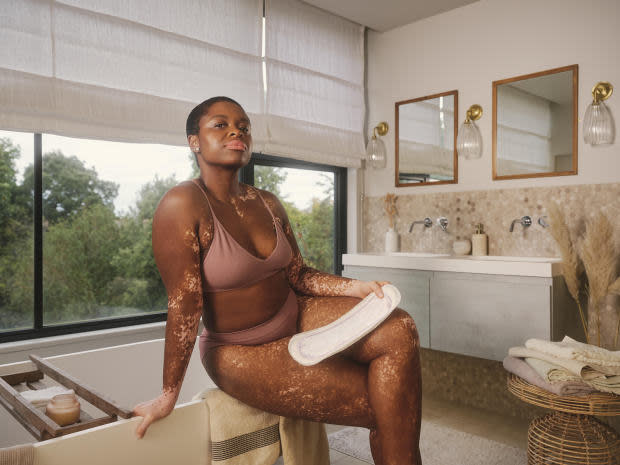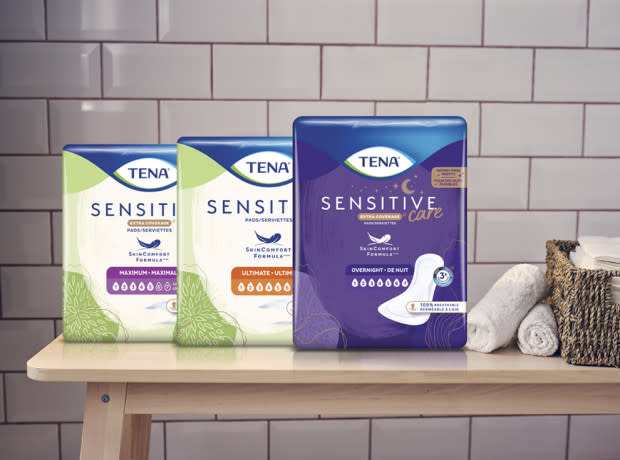Suddenly Lacking Bladder Control? Here Are 7 Surprising Ways To Help Get It Back

While it’s likely not a conversation that comes up over brunch with your friends, having a leaky bladder is more common than you may think. Urinary incontinence, aka involuntary control of urine leakage, affects up to 50 percent of adult women, including 75 percent of women over 65. (Between 3 and 10 percent of men experience it too.)
“Loss of bladder control can happen for a lot of reasons. The most common reasons are having a baby and aging,” says Dr. Samantha Pulliam, MD, FACOG, a urogynecologist, assistant professor at Tufts University School of Medicine, and the chief medical officer at Axena Health. Urinary incontinence happens when the muscles in the pelvis that are used when you need to hold your bladder closed, such as during a sneeze, are damaged or weakened. “Childbirth can cause damage to these muscles that leads to weakening, and growing older can lead to overall muscle weakness, including these important pelvic muscles,” Dr. Pulliam says.
Dr. Aleece Fosnight, MD, a urologist and Medical Advisor at Aeroflow Urology, says that while urinary incontinence is common, no one should feel like they can’t live life or engage in activities because of it. There are many simple actions that can help with regaining bladder control. Not sure where to start? Try these expert tips.
7 Ways To Get Bladder Control Back

TENA
1. Work With a Pelvic Floor Specialist
As Dr. Pulliam explained, weakened pelvic floor muscles can cause bladder control issues. So it makes sense that doing exercises to strengthen the pelvic floor will help. Kegel exercises, which involve repeatedly contracting and relaxing the pelvic floor muscles, are the standard—but they don’t necessarily work for everyone. For that reason, Dr. Fosnight recommends working with a pelvic floor specialist who can help you find the right option.
“Strengthening pelvic floor muscles is more than just performing a Kegel—and most people do not do them correctly,” she says. “You want to focus on the entire core, which includes the abdominals, lower back, hips and inner and outer thighs. A pelvic floor PT can help [recommend] exercises geared specifically to your individual needs.”
Related: I'm a Pelvic Floor Therapist—Here's My Advice for Staying Active When You Have Bladder Issues
2. Put the Brakes on Weightlifting for Now
Both doctors recommend avoiding heavy weightlifting, which can make urinary incontinence worse because it puts intense pressure on the bladder. Dr. Fosnight says that high-impact exercises like running can put pressure on the bladder too. She recommends avoiding activities like these until after being evaluated by a pelvic floor specialist. There are still plenty of ways to stay physically active without putting pressure on the bladder. Some bladder-friendly exercises include walking, swimming, cycling, yoga and Pilates.
3. Cut Down on Spicy Foods
Both doctors say that there are certain foods and drinks that make bladder control worse. For instance, Dr. Fosnight says that there is a connection between spicy foods and bladder irritation, which can aggravate symptoms.
She adds that specific triggers may vary from person to person, and suggests keeping a food diary to log what you eat and drink as well as when you notice symptoms flare ups. This can help you find connections between diet and bladder control issues.
4. Watch What You Drink
Caffeinated, alcoholic and carbonated beverages can also irritate the bladder in some people, increasing the frequency of urinary leakage, according to both doctors. Cutting down on these types of drinks may help alleviate symptoms.
5. Stay Hydrated
Both doctors emphasize the importance of staying hydrated with more bladder-friendly beverages like water. While you may be tempted to avoid liquids to minimize leaks, Dr. Fosnight emphasizes that proper hydration is important for not just bladder health, but overall wellness. “Drinking small amounts of water throughout the day can help to slowly fill up the bladder versus drinking larger volumes at one time,” Dr. Fosnight says. Sip small and sip often.
6. Up Your Fiber Intake
While most people don’t often think of fiber as supporting urinary health, Dr. Fosnight says that there absolutely is a connection. “Fiber-rich foods help to avoid constipation, which can cause bladder control concerns,” she says. Scientific research backs this up: One study showed that constipation significantly increased the risk of urinary incontinence in women.
Related: The 20 Best High-Fiber Foods to Help You Stay Full and Keep Things Moving

TENA
7. Take Advantage of Urinary Incontinence Products
While wearing urinary incontinence pads won’t stop bladder leakage they can make it easier to live with while you work towards a solution. Urinary incontinence products “can help people feel better about engaging in social activities and living independently,” she says. “I like to use them as bridging therapy and then only as needed.”
Dr. Pulliam emphasizes that it’s important to specifically use incontinence products and not menstrual pads. “The absorption of the incontinence pads should help keep your skin dry and ‘wick’ the moisture away,” she says. “Menstrual pads aren’t meant for that, and you may develop skin irritation from chronic wetness.”
Be sure to choose products specifically for your sex since the location of leaks is different for men than it is for women, Dr. Fosnight adds, and change the products when they are wet to prevent irritation.
If you’re looking for a brand that ticks off all the boxes, try TENA Sensitive Care pads. They’re dermatologically tested, 100 percent breathable, and are approved by the Skin Health Alliance. They also are the first-ever incontinence pads with TENA’s SkinComfort formula to help intimate, sensitive skin.
While bladder leakage is rarely talked about, it is common and manageable. “So many women delay doing anything about urinary incontinence, when they could be making it better,” Dr. Pulliam says. And now you know exactly where to start.
Next up, check out this list of 10 foods that support urinary health.
Sources
Samantha Pulliam, MD, FACOG, urogynecologist, assistant professor at Tufts University School of Medicine, and the chief medical officer at Axena Health
Dr. Aleece Fosnight, MD, urologist and Medical Advisor at Aeroflow Urology
Is urine incontinence normal for women? Mayo Clinic Health System
Treatment options for men with urinary leakage. Mayo Clinic Health System
Food Sensitivities in Diverse Nationwide Cohort of Veterans With Interstitial Cystitis/Bladder Pain Syndrome. The Journal of Urology
Constipation and the risk of urinary incontinence in women: a meta-analysis. International Urogynecology Journal.
